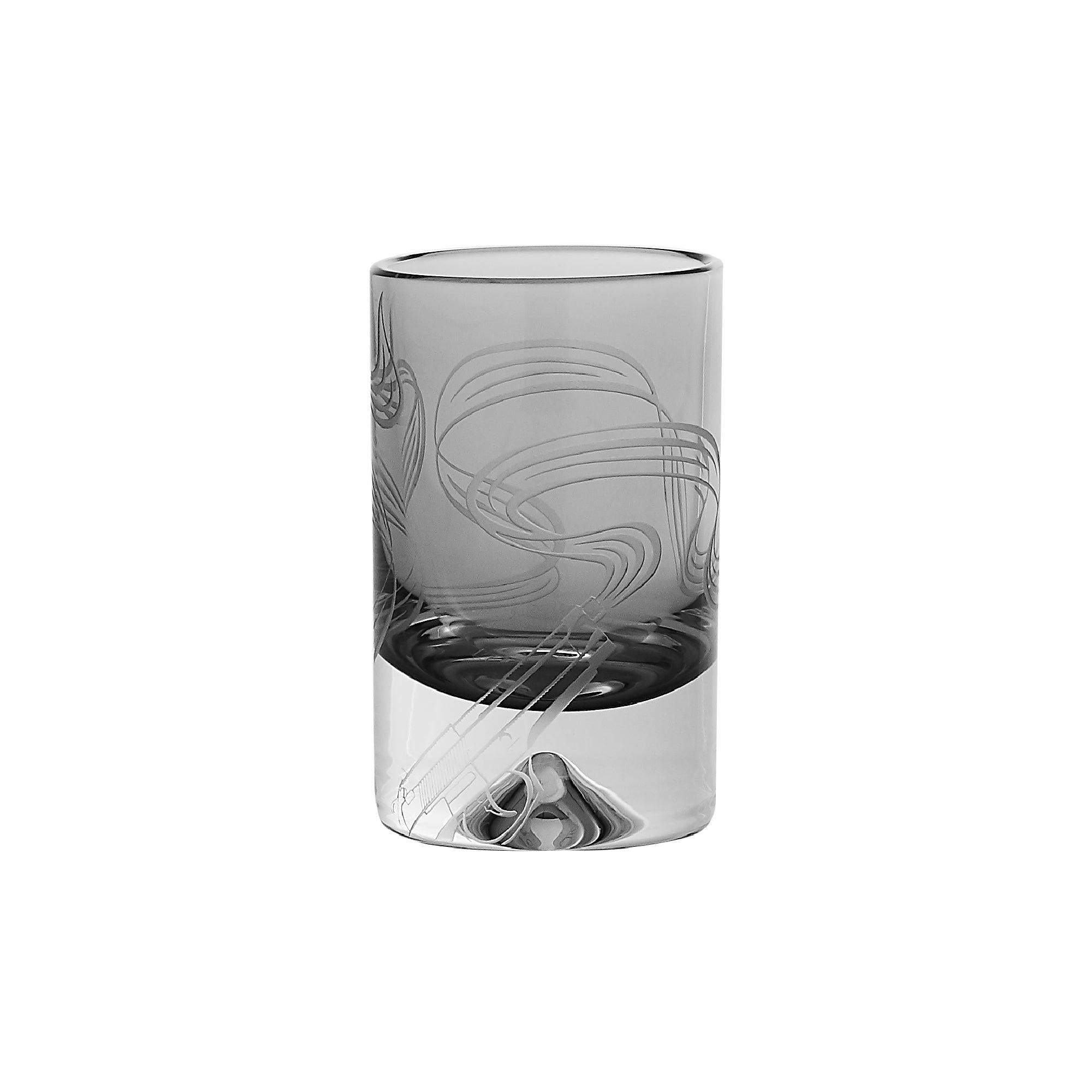Items Similar to Timofey Katurkin Russian Watercolor of Laughing Woman
Want more images or videos?
Request additional images or videos from the seller
1 of 6
Timofey Katurkin Russian Watercolor of Laughing Woman
About the Item
Laughing Peasant Woman
Signed in Cyrillic T. Il’ich, l.r. and inscribed To Dear A. F.Sklarevski...
Watercolor
Image size: 7 x 6 in. (17.8 x 15.2 cm.)
Framed: 18 1/2 x 17 1/4 in. (47 x 43.8 cm.)
Katurkin Timophiy Illich, 1887-1957
Katurking was a Russian painter and graphic artist born in the village of Peperovo, Tula Province. From 1904 till 1909 he studied at Odessa Art School, during 1909 - 1916 – at the High Art School in Petersburg Academy of Arts in the studio of V. Makovsky. In 1916 he won the title of the artist. After 1910, he participated in the exhibitions of the Academy of Arts, the Society of southern Russian artists (1911), "The Community of artists" (secretary-since 1916), the Association of Traveling Art Exhibitions (1918) and others. His works are kept in the State Museum of Political History of Russia in St. Petersburg and other Russian Art Museums.
Provenance: From the private collection of Alexander Sklarevski.
Alexander Fedorovich Sklarevski (1882-1963) was a concert pianist who fled Russia during the Bolshevik Revolution. Travelling east by train across Siberia to Vladivostok, a grueling five-week journey, he carried with him a few treasured possessions from Russia, including this painting. Graduating in 1908, Sklarevski received the first of many gold medals from the Imperial Conservatory of Music in St. Petersburg. He later became Director of the Third Imperial Conservatory of Saratov. For decades and to great acclaim, Sklarevski played in concert halls around the world, from Harbin, Shanghai and Tokyo to Paris, Washington and New York. In 1923, he joined the faculty of the Peabody Conservatory in Baltimore where he remained a professor for 30 years.
- Creator:Timofey Il’ich Katurkin
- Dimensions:Width: 18.5 in (469.9 mm)Length: 17.25 in (438.15 mm)
- Style:
- Place of Origin:
- Period:
- Date of Manufacture:Circa 1910
- Condition:Wear consistent with age and use.
- Seller Location:St. Catharines, CA
- Reference Number:
About the Seller
5.0
Recognized Seller
These prestigious sellers are industry leaders and represent the highest echelon for item quality and design.
Gold Seller
These expertly vetted sellers are highly rated and consistently exceed customer expectations.
1stDibs seller since 2011
279 sales on 1stDibs
Typical response time: 1 hour
- ShippingRetrieving quote...Ships From: St Catharines, Canada
- Return PolicyA return for this item may be initiated within 3 days of delivery.
More From This SellerView All
- Russian Silver Pencil Holder, Moscow, circa 1910Located in St. Catharines, ONFrom the Romanov era period of Tsar Nicholas II, this Russian revolution survivor from Moscow is designed as a smooth silver pencil holder engrave...Category
Vintage 1910s Russian Russian Empire Desk Accessories
MaterialsSilver
- Franco-Russian Alexander III Commemorative Medallion, 1896Located in St. Catharines, ONIn silvered bronze, a table medallion commemorating Nicholas and Alexandra’s visit to Paris to lay the first stone on the Alexander III bridge in 1896, w...Category
Antique 1890s French Greek Revival Desk Accessories
MaterialsSilver Plate, Bronze
- Russian Civil War Commemorative Porcelain Cup and SaucerLocated in St. Catharines, ONPainted between 1935 and 1946 by the Dimitrov Factory near Moscow, the rare porcelain cup and saucer commemorates the Russian Civil War of 1918-21. Of high quality with crisp detail and vivid color, the front of cup depicts a detailed scene of Red Army Cavalry on patrol while the saucer features exploding artillery shells on a burgundy background enhanced with gilt scrolls. cup 2 1/8 in. ( 5.4 cm) high; 3 1/4 in. ( 8.2 cm) diam. By Sergei Efremovich Sazonov (1870-1944), Dmitrovsk Porcelain Manufactory. Stamped with factory mark on base of cup and saucer in Russian: Dimitrovskaia for the factory, RSFSR for Russian Soviet Federated Socialist Republic, Verbilki town outside Moscow and NKMP:-Peoples Commissariat for Local Industry. Few examples of this service, which was produced in the former Gardner Factory, appear on the market. Literature: For a plate by the Dmitrov Factory see Nina Lobanov-Rostovsky, Revolutionary Ceramics: Soviet Porcelain...Category
Mid-20th Century Russian Boxes and Cases
- Russian Imperial-era Porcelain Shell-shaped Dish, circa 1900Located in St. Catharines, ONFrom the Romanov era, period of Tsar Nicholas II, a shell-shaped serving dish with blue border and scroll designs and central Cyrillic cipher or emblem (worn), stamped with blue overglaze factory mark. By the Kuznetsov Factory, Moscow, circa 1900 9 1/4 x 5 ½ in. (24 x 44 cm.) Founded in 1810 by Iakov Vasilevich Kuznetsov in the Moscow Provinces, the factory flourished in the 19th century adding several branches in other regions. In 1902 the firm received the title "Purveyor to the Imperial Court" and by the end of the Romanov era, had become the largest of its kind in Russia, even absorbing the Gardner Factory, Russia's oldest private porcelain factory. Kuznetsov porcelain...Category
Antique Early 1900s Russian Rococo More Objets d'Art and Vertu
- Russian Silver Alexander II Tankard by Sazikov, St. Petersburg, 1859By Pavel SazikovLocated in St. Catharines, ONFrom the Romanov era, period of Tsar Alexander II, the cover and sides of the trompe l'oeil silver tankard chased to simulate oak woodgrain, enhanced with horizontal polished silver gilt bands. The hinged cover has a crenelated edge surrounding a circle of dots like the rivets of an oak barrel. With curved handle and thumbpiece, with original gilded interior. By Sazikov, with the Imperial Warrant, St. Petersburg, 1859, assaymaster Eduard Fedorovich Brandenburg, stamped with the maker's mark in full in Cyrillic. 5 ¼ in. (13.3 cm.) high including thumbpiece. Literature: Beyond Fabergé: Imperial Russian Jewelry by Marie Betteley and David Schimmelpenninck van der Oye, Schiffer, 2020, page 309. Supplier to the Imperial court and founded during the reign of Catherine the Great in the centre of Moscow, Sazikov was one of the earliest and finest silver firms in Russia. In the 1820s Sazikov introduced historicism in Russian silver by producing objects with historical motifs or imitating ancient styles. Decades before Fabergé, the firm excelled in the Style Russe...Category
Antique 1850s Russian Russian Revival More Objets d'Art and Vertu
MaterialsSilver
- 1890s Russian Fabergé Imperial-era Silver Dip Pen, St. PetersburgBy FabergéLocated in St. Catharines, ONFrom the Romanov era, period of Tsar Nicholas II, the tapering cylindrical quill of rococo design, the ends decorated with scrolls, one with a reeded foliate border. by Fabergé, workmaster Julius...Category
Antique Late 19th Century Russian Rococo Desk Accessories
MaterialsSilver
You May Also Like
- Stephen Webster Russian Roulette Smoking Gun Shot Glass - Set of 2By Stephen WebsterLocated in London, GB'Russian Roulette' is a set of intricate and expressive bar accessories inspired by the cupolas of Moscow's Saint Basil's Cathedral. A range of crystal glassware etched and gold eng...Category
2010s British Contemporary Barware
- Stephen Webster Russian Roulette Smoking Gun Martini Glass - Set of 2By Stephen WebsterLocated in London, GB'Russian Roulette' is a set of intricate and expressive bar accessories inspired by the cupolas of Moscow's Saint Basil's Cathedral. A range of crystal glassware etched and gold eng...Category
2010s British Contemporary Barware
- Stephen Webster Russian Roulette Smoking Gun Highball Glass - Set of 2By Stephen WebsterLocated in London, GB'Russian Roulette' is a set of intricate and expressive bar accessories inspired by the cupolas of Moscow's Saint Basil's Cathedral. A range of crystal glassware etched and gold eng...Category
2010s British Contemporary Barware
- Antique Russian Silver Travel Icon Pendant of Our Lady of the Sign, PanagiaLocated in New York, NYOne of the most sacred and revered images of the Virgin, the iconography refers to an event which took place on November 27th, 1165 during the assault on the city of Novgorod. In an effort to save the city, the citizens of Novgorod brought the icon of Our Lady of the Sign to the city wall and when one of the arrows struck the icon, tears formed on the image. The Bishop of Novgorod proclaimed that this was a sign that the Virgin was entreating her Son to spare the city. Novgorod was spared and the image, known as Znamenie, became highly venerated in Russia as a powerful protection symbol. This beautiful travel icon...Category
Antique 19th Century Russian Russian Empire Pendant Necklaces
MaterialsSilver
- Rare Antique Russian Icon Saint Tryphon, Patron Saint of Wine Growers, FalconersLocated in New York, NYExceptionally rare antique Russian Icon of Saint Tryphon, the Patron Saint of wine growers, restauranteurs, falconers. Saint Tryphon's saint day is February 14th, according to the Old Calendar, which is the time for wine growers to prune their grape vines for an abundant harvest in the fall. This day became a wine festival celebrated with much drinking to toast the upcoming growing season, particularly in Greece, Macedonia and the surrounding Balkan Countries where wine is an important source of income. By extension, Saint Tryphon also came to be revered as the Patron Saint of restauranteurs and bar keepers. A Russian legend relating to Saint Tryphon is that Tsar Ivan the Terrible...Category
Antique 19th Century Russian Russian Empire More Objets d'Art and Vertu
- Large Morozov Antique Russian Silver Filigree Icon of Saint John the TheologianBy MorozovLocated in New York, NYA fine and rare silver filigree icon of Saint John the Theologian in Silence. Signed Morozov, 1887 Workmaster: Vassily Kangin 32..7cm by 29cm Ivan Morozov established his eponymous ...Category
Antique 19th Century Russian Russian Empire More Objets d'Art and Vertu
MaterialsSilver
Recently Viewed
View AllMore Ways To Browse
Jewelry From Russia
Russian Imperial Gold
Russian Imperial Jewellery
Russian Imperial Jewelry
Village Jewelry
Political Jewelry
Antique Empire Secretary
Signed In Cyrillic
Hallings Secretary
Concert Hall Painting
1 St Empire
Traveling Secretary
Baltimore Jewelry
Antique Jewelry Washington
Malachite Mantle
Jade Bowl Ruby
Verdura Walnut
Vintage Dubarry Jewelry


